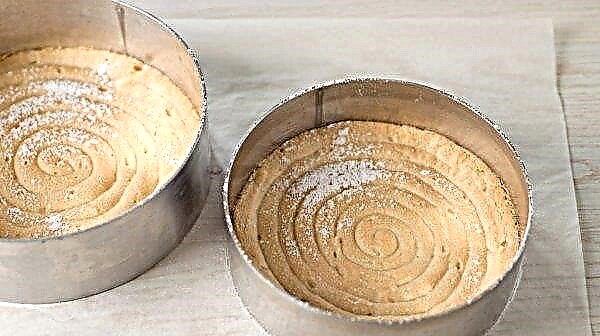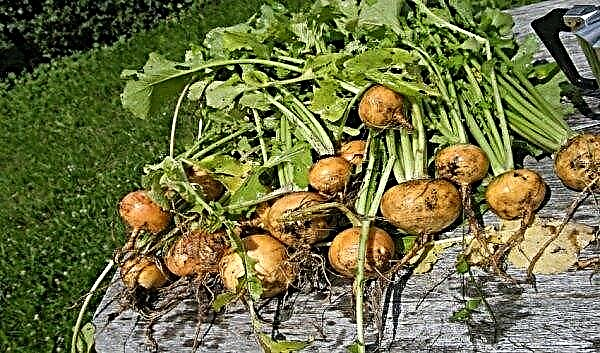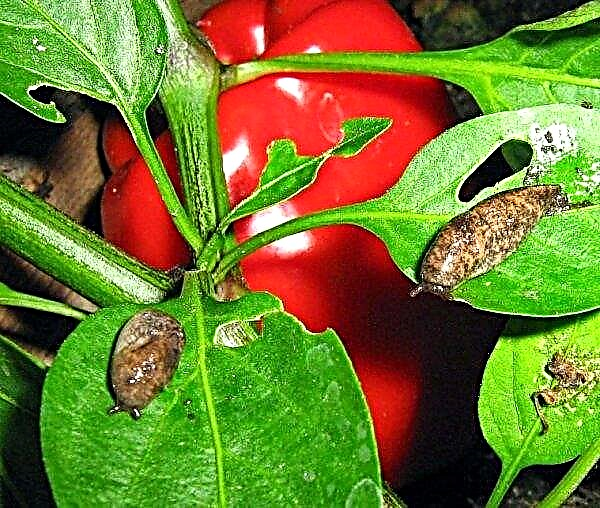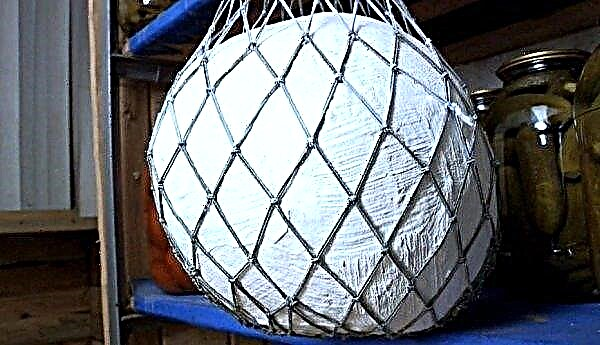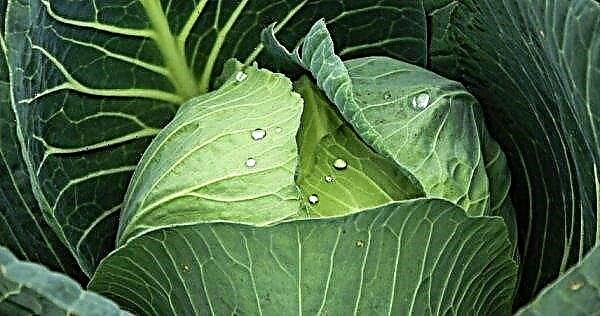In recent years, stefanotis, a winding shrub with delicate white flowers, has gained popularity in landscape design. This bush is evergreen, but sometimes its foliage turns yellow. Why this is happening and how to deal with it, we will describe in detail in today's article.
Botanical Description
In nature, stefanotis is common on the African continent and on the island of Madagascar. For snow-white flowering, resembling a jasmine color, it is called Madagascar jasmine.
The shrub grows branched in different directions, the height of the plant exceeds 4 meters, it is often used in landscape design and in private gardens in the southern regions. At home, the growth of the bush is regulated by pruning. The stems are lignified with growth, become thick, but they do not lose flexibility. The flexibility of the branches is used in floristry to create beautiful wreath compositions, and in pot culture - to give the bush the desired shape.
The leaves of stephanotis are richly green in color, bright, dense, with a smooth, shiny surface. The plates are opposite, oval in shape, with a bright central vein. The length of the sheet is about 10 cm.
Florists are pleased with the ability of stefanotis to bloom all year round. At the ends of the branches, the plant throws out a group of peduncles with white elongated buds with five- or 6-petal sepals. The shape of the bud resembles a long tube with a box at the end when closed. Opening, the flower shows five wax-coated petals, shaped like a pig’s ear. The diameter of the opened flower is up to 1.5 cm.
Did you know? In Greek, the name "stephanotis" is composed of two words: stephanos - "crown" and otos - "ear".
After flowering, dicotyledonous fruits are formed that resemble plum or apricot in shape. When they are immature, it is green, often with a glossy peel surface. As it ripens, the skin wrinkles and takes on a tan. If you open the fruit, dividing into two halves, inside you can observe fleshy (inedible) pulp, numerous dark brown seeds and silky, shiny fibers.
Rules for caring for a flower at home
You can achieve the brightness of foliage, flowering and fruiting by providing the plant with a regime close to the conditions of the natural habitat and proper care for stephanotis.
The required microclimate parameters and care procedures are as follows:
- lighting - bright but scattered. Light day for at least 10 hours, in winter you need lighting;
- location - east and west windows;
- temperature - in the summer + 19 ... + 22 ° С, in the winter + 15 ... + 20 ° С;
- humidity - increased, 70–75%, daily spraying in the summer;
- watering - in the summer every other day in small portions, in the winter they are reduced to once a week;
- top dressing - for decorative flowering plants, 2 times a month from March to August;
- pruning - as it grows and necessary.
Important! In winter, the flower needs to be kept cool — this stimulates its future flowering and is one of the measures to prevent spider mites.
Why do the leaves of stefanotis turn yellow and what to do
Tropical plants always require strict adherence to the regime. Flower grower's mistakes lead to problems with flowering and bush development.
Dry air
Stefanotis does not know how to accumulate moisture, like succulents - the grower must maintain the necessary mode. In addition to the sprayings mentioned above, to moisten the air, pallets with wet expanded clay and pebbles are placed next to the plant. You can use purchased room humidifiers, decorative fountains, aquariums with clean water. The location close to the working heating devices is excluded.
Direct sunlight
The sun is most active and aggressive in the midday hours, so if the flower is standing on an open window sill, shade it with a homemade curtain from tulle or other translucent fabric. Otherwise, ugly burn spots will appear on the foliage, and the leaf may fly around.
Nutrient deficiency
From a lack of nutrition, the foliage not only turns yellow, but also falls off. For full development, the plant needs a complex of minerals and vitamins. It is recommended to alternate organic and mineral complexes during feeding.
Effective for decorative flowering plants consider these:
- Bona Forte - NPK mineral complex plus boron, magnesium, manganese and other elements, including vitamins and succinic acid. Used as a stimulator of growth and flowering. The solution is made in a ratio of 10 ml / 1.5 l of water, stefanotis is watered with it;
- "Stimovit" - An organic preparation made from vermicompost promotes flowering and growth, protects the flower from diseases and pests. Dilute the drug 1:40, using spraying.
Did you know? Residents of Madagascar give stephanotis to girls of marriageable age. Belief says: the scent of flowers attracts men to the house.
Wrong watering
Stefanotis reacts poorly to hard water, therefore, to irrigate it, you need liquid that has been left standing for at least 24 hours. Ideally, take bottled or filtered water. During the period of active development - this is spring - summer, watering the plants is carried out once a week. Irrigate the soil in small portions, waiting for absorption. The earth should not be wet, it should be wet.
Hypothermia
Drafts are categorically not allowed - when ventilating the room, the flower is removed to the nook. When placing a flowerpot, choose a place further from the balcony or entrance doors. Critical to the content is considered a temperature below + 15 ° C. The root system can also be subcooled by irrigation with cold water, which will cause yellowing and drying of the leaves. Therefore, the water should be not only soft, but also warm, with a temperature not lower than + 18 ° С.
Pests
In case of damage by insects, the grower needs to know what kind of parasite it is to get rid of it and eliminate the causes of the appearance.
So, the main pests of stefanotis and methods of dealing with them:
- Aphid - a microscopic insect, most often green or whitish, can be winged and wingless. The parasite is attracted by heat and moisture, therefore it is not necessary to wet the flowerpots, and after spraying it is advisable to get the leaves wet with a clean cloth. You can find the settlement in the axils of the leaves and on their lower side. You can destroy the insect with the help of "Actellik", spraying the flowerpot with an aqueous solution at a concentration of 2 ml / 2 l.
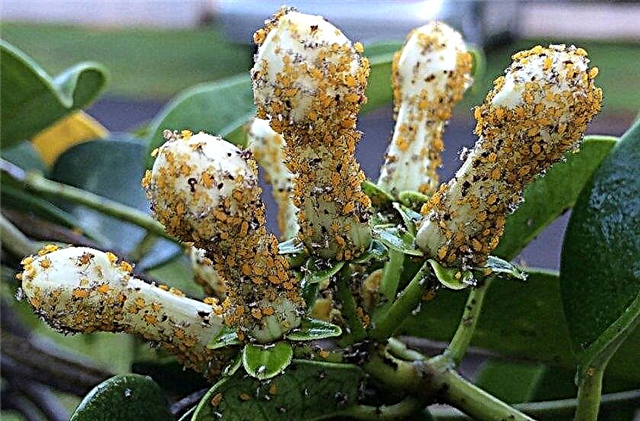
- Mealybug - small, up to 6 mm, insect, similar to shaggy white lice. It is dangerous not only because, like aphids, it sucks plant sap, but also because fungi develop on its secretions. The pest is attracted by dry air and dry parts of plants. A white colony on green foliage is visible with the naked eye, especially since the pest does not hide, settles on the entire surface of the stems and leaf plates. You can fight the parasite by spraying the stephanotis "Actara", the aqueous solution should be in a proportion of 1 g / 1.25 L. Before the procedure, part of the insects are washed off with a soapy solution.
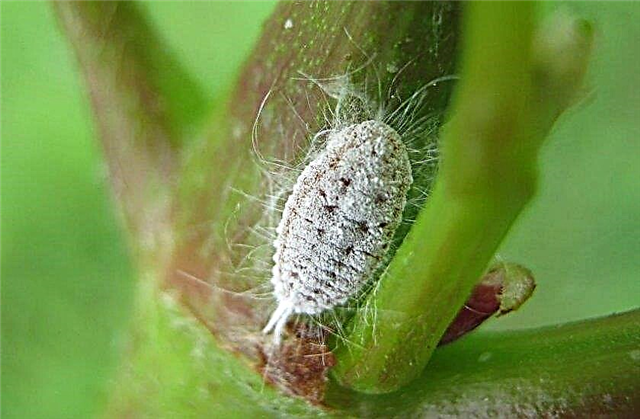
- Spider mite - small arthropod with a brown tinge of the calf, hiding on the inside of the leaf. You can notice the defeat by sucking insects by black dots on the greenery. The ideal habitat and breeding environment is dry, stagnant air. Mite insecticides are generally powerless. Agrovertin is an acaricide effective - spraying is carried out with an aqueous solution in a proportion of 2 ml / 1 liter.

How to transplant a plant
Transplantation of young specimens is carried out annually in the spring, before flowering begins. Older specimens often simply replace the topsoil once every 2-3 years. Transplant method - transshipment.
As mentioned in the description, the stems grow lignified and thicken as they grow, so the plastic container is not suitable, as it can tip over. The pot is taken ceramic, 5-7 cm more than the previous one.
Soil for successful flowering should have a slightly acid reaction.
Prepare it from the following components (3: 2: 1: 1):
- leaf soil;
- soddy clay soil;
- peat;
- river sand.
Transplant Technology:Important! You need to work with stefanotis with gloves: its juice is poisonous. For the same reason, it is placed out of the reach of children and pets.
- To facilitate the extraction of stefanotis from the old tank, the flowerpot is watered the day before.
- Gently, holding a hand, pass out of the pot.
- Inspect the root system for rot, damage. The diseased parts are removed, the slice is treated with powdered activated carbon, and dried.
- At the bottom of the new tank they put drainage - this is gravel, pebbles.
- A third of the pot is filled with earth, a plant is placed there, the roots are straightened and the soil is added.
- For 2-3 days, the flower is placed in the shade for adaptation.

Madagascar jasmine will require attention from a grower, but its unusual and fragrant flowering will please the eye almost all year round. Prevention of problems during cultivation will be compliance with the rules of care.




